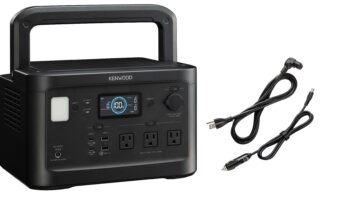As new technologies reshape consumer electronics, and retail competition intensifies, the industry’s leading merchants are continually morphing to keep pace with change and press their marketplace advantage.
What follows is a look at some of the strategic developments now fomenting at three top retailers that could have a profound effect on the retail landscape. A separate report on Circuit City will appear in the August 21 issue.
Best Buy
Looking from the outside in, the biggest changes at the nation’s number one No. 1 merchant would appear evolutionary rather than revolutionary. These include further refinements in the adjacencies and mix of Best Buy’s Concept 4.5 big-box stores, as well as their first-time appearance within the New York City and Seattle markets later this season.
But internally, there’s a paradigm shift taking place in the company’s organization and focus, and it centers around its new Digital Technology Solutions initiative.
The 130-person group, led by senior VP Phil Schoonover, is spearheading Best Buy’s foray into wireless, broadband and narrowband technology, interactive television and bundled solutions, which is where the specialty chain says it will concentrate its digital growth. And digital technology, stresses chairman/CEO Dick Schulze, is where the company’s future lies.
“We’re looking to focus our position on technology as this relates to life centers – by keying on the customer’s comfort level, not just low price,” he told analysts during a phone conference last month during the company’s annual meeting.
To underscore the point, he noted that digital revenues as a percentage of the sales mix are expected to grow to 14 percent by the end of the current fiscal year, with the projected compound average growth rate pegged at 84 percent year over year.
Schoonover, who played a key role in forging Best Buy’s earlier announced ISP partnership with Microsoft, described the Digital Technology Solutions group as “an effort to market new value-added services for our customers” and to “tie our services with products to create end-to-end customer solutions.
“To fulfill Best Buy’s vision of meeting customers at the intersection of technology and life, we will combine digital products, connectivity and integrated services that help make technology fun and easy to use.”
Schoonover, formerly senior VP merchandising for consumer electronics and digital communications, culled his team from throughout the Best Buy organization.
The group includes such company veterans as Mike London, now responsible for music and movies while also overseeing the CE category; Duane Hoff, who’s leading the retailer’s digital and interactive TV services strategy; and Gary Arnold, who was assigned to the company’s new Redline Entertainment division. That unit is examining ways to expand Best Buy’s role in the entertainment business through artist and content development, digital distribution and the sale of finished content.
RadioShack
Big changes are afoot at RadioShack, as the best-laid plans of chairman, president and CEO Len Roberts are finally coming together.
Last month, the company, which dropped its Tandy corporate moniker to become synonymous with its core retail holding, officially launched its in-store RCA digital entertainment centers, which were 14 months in the making.
The Thomson-supplied A/V “stores-within-a-store” represent a continuation of a strategy Roberts initiated soon after taking the helm of the ailing chain when he forged similar strategic alliances with Compaq and Sprint.
Another spoke in Roberts’ recurring revenue wheel will be added during the third quarter of this year, when the first blush of RadioShack’s five-year ISP pact with Microsoft will appear as yet another in-store kiosk.
In return for making Microsoft its exclusive provider of dial-up, broadband and other online services, the software maker has provided a $100 million cash infusion for RadioShack’s e-commerce site, RadioShack.com.
As George Sutton, a retail analyst with Dain, Rauscher and Wessels once told TWICE, “Len is a visionary for where the industry is heading, and he’s done a super job.”
Sutton described Roberts’ strategy as a “triangle approach” to the business, with Compaq, Microsoft, Sprint and RCA representing successive layers, and the total triangle representing a full-service provider.
Indeed, as Roberts noted last month on the company’s first day of trading as RadioShack Corp., profits from recurring connectivity services are expected to hit the quarter-billion-dollar mark by 2004.
“The bigger the Internet becomes, the bigger we become,” Roberts told analysts last month at PaineWebber’s 11th Annual Growth & Technology Conference in New York. “There is great potential with the Internet for leveraging RadioShack’s great strengths.”
Meanwhile, there are plenty of terrestrial doings at the 7,000-unit chain. The company has just begun testing a new store format in Tucson that improves product adjacencies by dividing the 17 retrofitted test stores into four “zones” that group similar goods and services. Also, the company continues to tinker with its three RadioShack.com prototype stores, which were created out of its former TechAmerica units in Atlanta, Denver and Phoenix.
Sears
Perhaps the most seismic changes of the three are taking place at Sears, the nation’s No. 1 majap merchant, sixth-largest seller of CE products, and second-largest U.S. retailer overall. And they’re starting at the top: the chain announced in March that chairman/CEO Arthur Martinez would be stepping down and an external search had begun for a successor.
But the retailer isn’t sitting idly by as its executive search firm pours through resumes. Indeed, a number of key initiatives were unveiled this year to give the aging chain some added oomph as it enters the new millennium.
Among the most dramatic: plans to develop a national chain of freestanding electronics and/or appliance stores that would serve as an adjunct to its 850 full line units. According to Martinez, the specialty stores would range in size from 12,000 to 15,000 square feet, and would be located in markets not currently served by the company’s mall-based department stores.
Things are also percolating within Sears’ CE department, now under the auspices of newly named VP/general merchandise manager Raymond Brown.
As part of the stores’ general housecleaning, product adjacencies are being readjusted and assortments are being refined. The latter move is most apparent in the PC area, where a new made-for-Sears line of Compaq computers is in the process of replacing existent offerings by Hewlett-Packard and eMachines.
Sears is also getting ready for the wired future. In March it announced a strategic alliance with AOL that includes plans to sell and co-market broadband access, installation and service, as well as a line of Internet-enabled devices.
On the e-commerce front, its b-to-c site, Sears.com, is about to add consumer electronics to the fold as former hardlines honcho Chuck Cebuhar takes the reins as chief merchant. Meanwhile, the company continues to develop its b-to-b service, GlobalNetXchange, which it launched earlier this year with partners Oracle and Carrefour.









